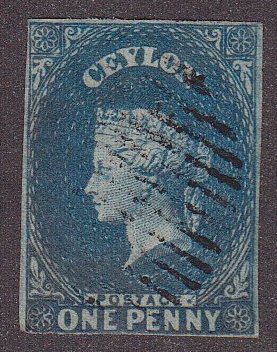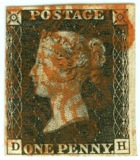
Discussion - Member to Member Sales - Research Center

Discussion - Member to Member Sales - Research Center

Approximately 85,064 of the emergency stamps were issued on non-watermarked white paper; the emergency stamp is scarce.

Scarlet Robin - April 21, 1965
The robin was printed on Helicon paper. Helecon was a trade name for a phosphor fluorescent from the zinc-sulphide group that reacts to Ultra Violet light and fluoresces a bright orange red. The UV range it is sensitive to is 3000 - 4000 Angstroms. It was applied on and after 1965 to all postage stamps to allow for automatic cancellation of letters. The machinery would simply detect the presence of the stamp, somewhere on the envelope, and react accordingly.

White paper 1965 Emergency issue

Australian $2 depicting "one pound" Jimmy
The aboriginal depicted in the 2/6d stamp was known as “one pound†Jimmy; when asked how much would it cost for his services his price was always one pound, hence “one pound†Jimmy.
“One pound Jimmy, real name Gwoya Jungarai of the Anmatyerr people of Central Australia died March 28, 1965. His relatives were killed in the Coniston Massacre in the Northern Territory in 1928.
http://coniston.pawmedia.com.au/background
He was the first named Aboriginal person to appear on an Australian stamp, in 1950. The design of the Australian 2 dollar coin was inspired by a drawing of him by artist Ainslie Roberts
(Modified by Moderator on 2015-07-28 16:52:27)

3 Members
like this post.
Login to Like.

Emergency Stamp: In September 1965, stocks of the 2/6d Robin had run out (original print - 3,726,000). The Chambon press was preparing for the decimal issues to be issued on February 14, 1966. To overcome the shortage, sheets containing imprint and no imprint were utilised with the aboriginal design, with a 14½ perforation.
Approximately 85,064 of the emergency stamps were issued on non-watermarked white paper; the emergency stamp is scarce.

Scarlet Robin - April 21, 1965
The robin was printed on Helicon paper. Helecon was a trade name for a phosphor fluorescent from the zinc-sulphide group that reacts to Ultra Violet light and fluoresces a bright orange red. The UV range it is sensitive to is 3000 - 4000 Angstroms. It was applied on and after 1965 to all postage stamps to allow for automatic cancellation of letters. The machinery would simply detect the presence of the stamp, somewhere on the envelope, and react accordingly.

White paper 1965 Emergency issue

Australian $2 depicting "one pound" Jimmy
The aboriginal depicted in the 2/6d stamp was known as “one pound†Jimmy; when asked how much would it cost for his services his price was always one pound, hence “one pound†Jimmy.
“One pound Jimmy, real name Gwoya Jungarai of the Anmatyerr people of Central Australia died March 28, 1965. His relatives were killed in the Coniston Massacre in the Northern Territory in 1928.
http://coniston.pawmedia.com.au/background
He was the first named Aboriginal person to appear on an Australian stamp, in 1950. The design of the Australian 2 dollar coin was inspired by a drawing of him by artist Ainslie Roberts
(Modified by Moderator on 2015-07-28 16:52:27)

3 Members
like this post.
Login to Like.

